Learning New Skills is Cool! Pratt Institute’s Five New Continuing Ed Programs
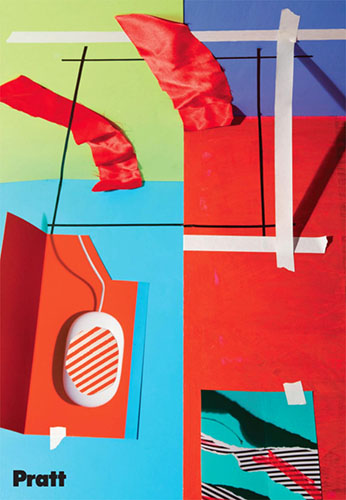
The architecture and design fields proudly maintain a reputation for being on the forefront of progressive thinking and practice – sustainability, technology, business models – you name it. As such, A&D professionals spend a lot of time trying to keep up with changing standards, new tech, and cutting edge work strategies.
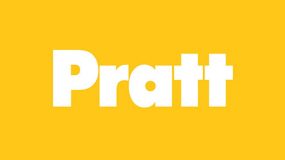 Part of that effort means hiring and creating partnerships with people of different skill sets who can help carry out that work with and for you. But, another part of the equation is actually educating oneself in the new skills or knowledge you desire. What we don’t know can be a powerful weakness (or maybe, what we know we don’t know but keep ourselves in the dark about).
Part of that effort means hiring and creating partnerships with people of different skill sets who can help carry out that work with and for you. But, another part of the equation is actually educating oneself in the new skills or knowledge you desire. What we don’t know can be a powerful weakness (or maybe, what we know we don’t know but keep ourselves in the dark about).
This week, we got word of five new programs the Pratt Institute in New York City is introducing to its School of Continuing and Professional Studies (SCPS). SCPS is a wing of the Institute offering nontraditional students credit and noncredit programs and courses in art, design, marketing, photography, digital design, fashion, perfumery and more. The school is geared toward people who want “educational advancement, career change and enrichment.”
Pratt usually adds one or two brand-new SCPS programs each September, so this year’s whopping five additions certainly caught our attention. But, not all continuing ed. options are created equal; and spending your disposable income on non-required educational advancement can be disheartening.
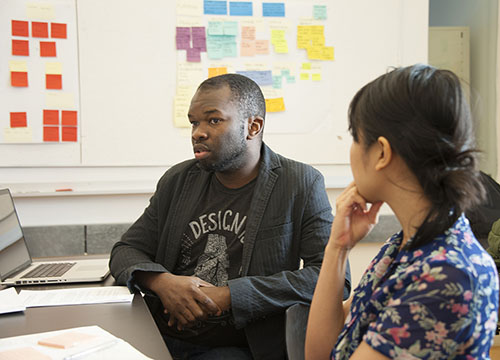
There are ways to make your time and dollars count in choosing a continuing education course. There’s nothing worse than spending time and money on a class that didn’t teach you anything new, so put in a little legwork and consider the following:
>Focus on what you want to accomplish. Do you need NCIDQ, NCARB or other specific CEU credits? Do you have a side hobby you want to pursue; something not directly connected to your job responsibilities but that you’ve been wanting to try out? Is there a part of your job you feel less than confident about whenever it comes up in your day-to-day work?
>How much time and money do you want to invest? Are you looking for a one-hour CEU, a one-to-three day intensive workshop, or a spaced out, several session course spread across 10 weeks? Also, consider class size. Take time to shop around to find the best investment for what you want.
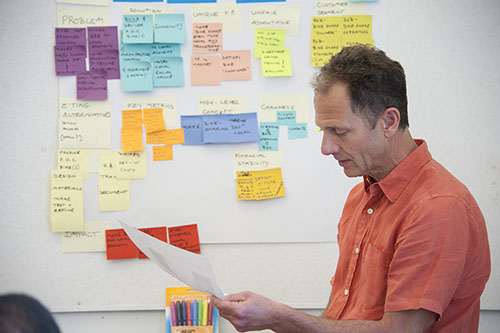
>For ideas, think about previous projects you’ve worked on that had a portion you felt you were unequipped to handle. Consider other people on your team who have job responsibilities you’re “jealous” of. Or, simply consider your side hobby in a new, more impactful light.
>Tap into your network for recommendations on continuing education opportunities. Continuing education has its own reputation for being a bit hit-or-miss on quality. Chances are, your colleagues have attended both awful and amazing courses and speaker series. Talking to your peers is a great way to weed out any junk courses you might have been considering, or to find out about any worthy ones you didn’t know about.
At Pratt, SCPS Director of Marketing Karen D’Angelo says that most people who sign up for their SCPS courses are prepped and ready to work.
“When people come to us, they usually have a very good understanding of their weaknesses and of the skills they need in order to achieve their goals. Many have portfolios, and they want to advance quickly.”
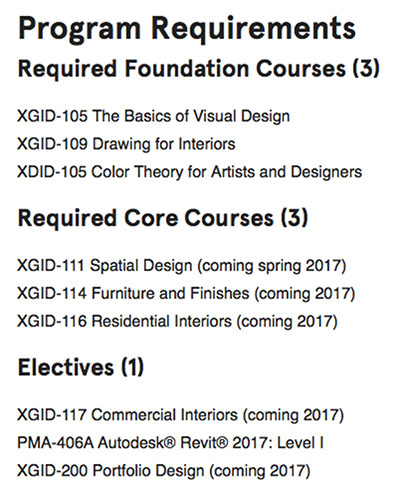
In a Basics of Visual Design course, included in the Creative Interiors program, a number of students are coming to the table with accomplished design careers already in place.
“But, they were feeling like they needed to expand their skills to keep up with new things they were encountering in their jobs,” said Ms. D’Angelo.
To get your mind jogging, we’ve included a quick description, provided by Pratt, of each of the new programs. And, if you don’t happen to live in New York City, check out your area’s top A&D programs for offerings – you might be surprised by what you find.
>Creative Interiors Program. “This program will provide the principles, techniques, and projects to design interior spaces and guide individuals to create a portfolio. Classes are offered in Manhattan. The program begins fall 2016 with additional courses available spring and summer 2017. This is a non-credit program and does not provide NYIAD or NCIDQ credits toward certification.” To learn more about the Creative Interiors program, click here.
>Video Editing. “Start, edit, and finalize a project in Adobe Premiere Pro. Learn a comprehensive workflow by an industry professional while developing a craft in the art of video editing. Incorporate sound and graphics into projects and prep for color correction. Personalize Premier Pro and learn advanced tools. Understand the delivery process and how to backup work. The instructor will provide demo footage, but students are free to use their own.” To learn more about the Video Editing certificate program, click here.

>Mobile (Indie) Game Design. “Build a core set of skills to design and develop games independently through the Certificate Program in Mobile (Indie) Game Design. Students will learn fundamentals in game theory, art direction, and how to develop a mobile game with the Unity game engine. Individuals will finish with prototypes that can be developed into finished games and publish in the app stores, and a skillset and portfolio you can scale beyond mobile to embark on a career path in game design.” To learn more about the Mobile (Indie) Game Design certificate program, click here.
>Business Communication for the Creative Professional. “This unique program is designed to prepare creative professionals to effectively present themselves and their skills as indispensable agents, providing the best solutions to clients’ problems in today’s digital market place. This certificate is for anyone whose responsibility includes communications in creative enterprises, including artistic and cultural organizations, design and architectural firms, entertainment, advertising, publishing, and other professional areas.” To learn more about the Business Communication for the Creative Professional certificate program, click here.
>Fine Art. “The Certificate in Fine Art is a program of study in methods, techniques and materials that will inspire and support individual’s conceptual and creative self-expression. It is also for those looking to pursue a study of art for individual growth or prepare a portfolio for entrance to a Masters program.” To learn more about the Fine Art certificate program, click here.



